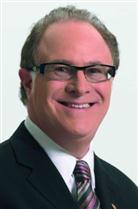
Integration of esthetic dentistry in routine and complex prosthodontics
Dentistry that is esthetic to the patient is an important clinical objective. The knowledge within dental technology, dental science and dental practice has dramatically expanded leading to better quality; artistry and more standards based clinical applications. Ceramics are the most consistently predictable esthetic dental material. Today dentists can offer more treatment options for patient’s complex problems. Metal-ceramics is only the “state of the art” for complex implant prosthodontics. The single phase or monolithic all-ceramic materials have become increasingly more popular and do not chip as do all bi-layered ceramic materials. These types of dental ceramic materials are dominating the market and future development bringing with it more long-term success.
Understanding methods to manage simple and complex restorative issues are critical to improving patient acceptance and even long term ceramic success. Methods to integrate the efforts of laboratory technologists and managing occlusion and patient’s desires can have a profound impact in the practice of dentistry.
All-ceramic materials were developed to improve ceramic color and marginal fit. Until recently few research reports attempted to study their long term use or factors that relate to their performance without modeling the data. Present bi-layered all-ceramic crowns on molars have reached their full potential. Despite substantial improvements in material strength and toughness, they still fail because of breakage and chipping at relatively high rates. The Lithium Disilicate E Max and Zirconia mono-layered all-ceramic material is changing dentistry and the expectation for long-term ceramic survival. Ultimately crown performance is a complex set of interactions between crown material and geometry, the characteristics of the support structure of the cement and crown, and the clinical loading history. This presentation will provide a comprehensive look at failure modes and effects in bilayer all-ceramic crown-cement-tooth systems, tying together the influences on resistance to fracture initiation and propagation of ceramic material properties and thickness; crown/tooth geometry; cement modulus and layer thickness; damage induced by shaping, fabrication, clinical adjustments, and sandblasting; and fatigue in the wet intraoral environment. Original research will be presented that studied the clinical behavior of over five thousand all-ceramic restorations. Life history and fracture rates were studied over twenty years in relationship to factors that might affect success. Factors such as tooth position, preparation, luting procedures and gender are significant to long term ceramic success.
1. To understand what factors and concerns a prosthodontist / dentist would have treating patients that require “esthetic procedures”.
2. To understand the problems and controversies that exists with modern dental materials.
3. To understand what clinical factors impact on long term survival of dental ceramic materials.
4. To understand the science of dental ceramic materials with a look to the future
Dr. Malament received his D.D.S. from N.Y.U. College of Dentistry and a specialty certificate and Master’s degree from Boston University School of Graduate Dentistry. Dr. Malament has a full time practice limited to prosthodontics in Boston that includes a dental laboratory with master dental technologists. He is a Clinical Professor at Tufts University and a Course Director in postgraduate department of Prosthodontics. He is a Past-President of the American Board of Prosthodontics, Greater New York Academy of Prosthodontics, Northeastern Gnathological Society and Northeast Prosthodontic Society. Dr. Malament is a Fellow of the American College of Prosthodontists, Academy of Prosthodontics, Greater New York Academy of Prosthodontics and Northeastern Gnathological Society. He is an active member of the International College of Prosthodontists, American Academy of Fixed Prosthodontics, American Academy of Esthetic Dentistry and Academy of Osseointegration. Dr. Malament was on the research and development teams for two different well-known ceramic products and developed instrumentation used in clinical practice.
